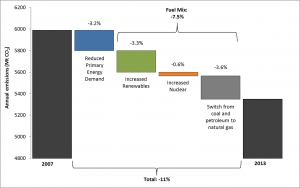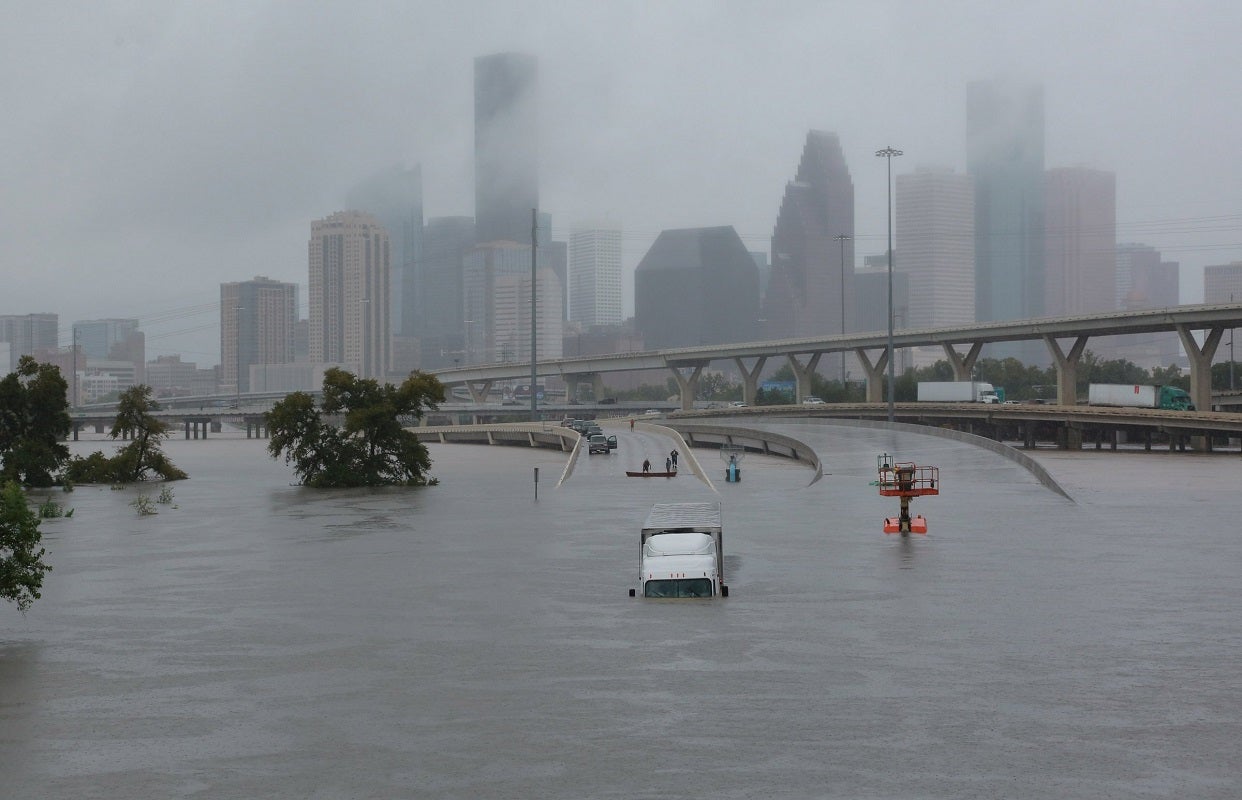This blog post originally appeared on Climate 411.
The Trump Administration is attempting to justify the rollback of crucial environmental and health protections by vastly undervaluing the costs of climate change.
The latest safeguards under attack are the Clean Power Plan, the nation’s first-ever limits on carbon pollution from existing power plants, and the Bureau of Land Management’s vital standards to reduce wasted natural gas from oil and gas facilities on public and tribal lands. They would have health, environmental, and economic benefits worth an estimated billions of dollars annually. But you wouldn’t know it from reading the Administration’s recently revised documents – because of a series of deceptive accounting tricks, including efforts aimed at obscuring the benefits of reducing carbon pollution.
The Trump Administration has used discredited methods to eviscerate the social cost of carbon — an estimate of the costs that carbon pollution inflicts on the public, represented as the dollar value of the total damages from emitting one ton of carbon dioxide into the earth’s atmosphere.
The social cost of carbon is a tool that helps ensure that policymakers consider the health, environmental and economic benefits of avoiding extreme weather, rising temperatures and intensifying smog when they make decisions that affect climate pollution.
Climate change harms businesses, families, governments and taxpayers through rising health care costs, destruction of property, increased food prices and more — so it’s common sense that we should properly account for the value of avoiding these harmful outcomes. But the Trump Administration has systematically undermined and attacked the well-established science of climate change – including the social cost of carbon, which has had a target on its back for a while now.
The most up-to-date estimates of the social costs of carbon were developed by an Interagency Working Group (IWG) of experts from a dozen federal agencies. They were developed through a transparent and rigorous process based on the latest peer-reviewed science and economics, and with input from the public and the National Academy of Sciences.
But in March, President Trump cast aside the results of this thorough and consultative process. He issued an executive order aimed at discrediting the IWG estimates, withdrawing them as government policy, and directing federal agencies to pick their own metric.
The executive order leaves federal agencies to fend for themselves without specific guidance, opens the door to extensive legal challenges, and effectively sets up agencies to cook the books to serve the Administration’s goals.
That’s exactly what EPA Administrator Scott Pruitt and Department of the Interior Secretary Ryan Zinke just did – releasing benefit-cost analyses that massively undervalue the costs of carbon pollution, radically reducing the estimates by up to 97 percent.
The Trump Administration would have us believe that the costs of carbon pollution are near zero. The Administration’s new estimates are only a couple dollars per ton of carbon dioxide – about as much as a cup of coffee or a bus ticket.
Sadly, communities around the country are already seeing just how wrong that is. From longer wildfire seasons to more intense hurricanes, the American public is already bearing the enormous costs of climate change.
Even the IWG estimates – roughly $50 per ton of carbon dioxide based on year 2020 emissions – are almost certainly a conservative lower bound since they do not yet reflect many different types of climate impacts.
A closer look at the Administration’s deceptive math
There are two major flaws in the Administration’s drastically reduced estimates, both of which fly in the face of established science and economic principles in service of obscuring the very real benefits of climate action.
First, the reduced estimates ignore that carbon emissions are a global pollutant, so they omit important categories of climate change impacts on the United States.
Second, they shortchange the harm to our children and future generations from climate change.
The so-called “domestic-only” estimate
Since the impacts of carbon pollution are felt globally regardless of where the emissions come from, leading researchers and the IWG have appropriately focused on accounting for that full global impact.
In contrast, the Administration’s revised estimates claim to consider “domestic-only” impacts to the United States. But that title is a misnomer – the Administration’s flawed approach ignores important categories of impacts that affect the American public. Climate impacts beyond our borders have costly repercussions for U.S. citizens in the form of changing global migration patterns, economic and political destabilization, and other “spillover” effects.
The National Academy of Sciences specifically rejected the approach the Administration is taking in a report released earlier this year, concluding that:
[C]limate damages to the United States cannot be accurately characterized without accounting for consequences outside U.S. borders.
Economist Richard Newell – president of the think tank Resources for the Future, which is leading an effort to implement the Nation Academy of Sciences’ recommendations to update the social cost of carbon estimates – has criticized the Administration’s approach, saying that considering only direct domestic impacts is:
[U]nnecessarily constrained and unwise for addressing inherently global pollutants like greenhouse gases.
The use of a “domestic-only” number also harms Americans because it undervalues the cost of climate pollution and encourages other countries to similarly undervalue – and over-emit – this pollution.
More than half a dozen leading experts argue:
[The] United States benefits tremendously if other countries set policy based on global rather than local effects.
They also point out that the use of a global estimate can encourage reciprocal climate action elsewhere. For instance, the Canadian government incorporated the U.S. IWG value in its own policy analysis.
Undervaluing the impacts on children and future generations
The Administration’s estimates also use a sharply lower value for the benefits that today’s carbon reductions provide to children and future generations. Again, this is in direct conflict with the weight of expert opinion that supports valuing these impacts even more than we did before the Trump Administration.
The Administration’s estimates “discount” future impacts at 7 percent – a rate significantly higher than the 3 percent central rate of the IWG, and one that is wholly unsupported by the economics literature when it comes to the long-lived intergenerational effects of carbon pollution.
A growing consensus among leading economists supports lower or declining discount rates, as does the Council of Economic Advisors.
As Richard Newell of Resources for the Future points out:
Practically speaking, the use of such a high discount rate means that the effects of our actions on future generations are largely unaccounted for in the new analysis.
In other words, the Administration’s estimates reveal just how little they value protecting American children and generations to come.
The social cost of carbon has profound influence on our policy process and embodies the very real costs of climate change that communities around the country are already feeling.
The Administration’s distortion of these values is illustrative of a frequent strategy of theirs – twisting the facts to validate their desired outcome, and in the process sowing doubt around the overwhelming scientific consensus on climate change.
Unfortunately, while the math the Administration is using is warped, the costs of climate change are still very real – and the American public is footing the bill.












